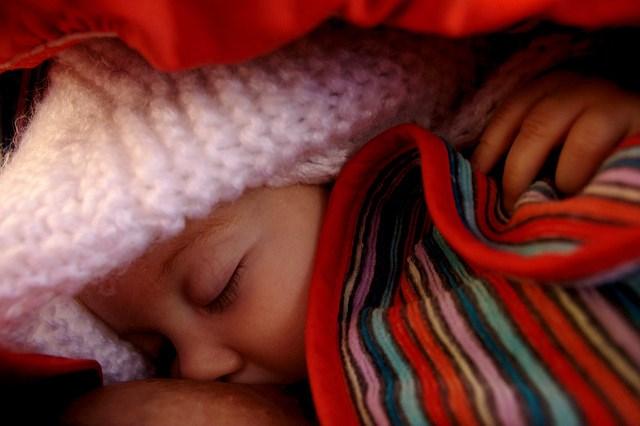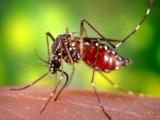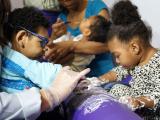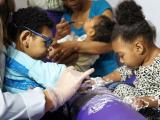The suspected link between Zika virus and congenital complications in newborns grew stronger today with the report of several severe birth defects in a stillborn Brazilian baby infected with the virus, as health officials in Colombia—hit by the virus after Brazil—reported the first hint of the potentially Zika-related microcephaly in a fetus.
In other developments, the World Health Organization (WHO) today unveiled several Zika-themed interim guidance documents aimed at assessing microcephaly, a condition of small heads and underdeveloped brains, and Guillain-Barre syndrome (GBS), two possible complications from the disease, as well as advise on breastfeeding in Zika virus settings.
For all three documents, the WHO convened conference calls with international experts in early February to gather information.
Possible links to other birth defects
Brazilian researchers reported the stillborn baby's case today in the latest online edition of Public Library of Science (PLoS) Neglected Tropical Diseases. The team first assessed the 20-year-old mother on referral when ultrasound showed slowness of intrauterine growth at 18 weeks gestation.
Follow-up ultrasounds in the second and third trimesters showed severe microcephaly, hydranencephaly (lack of cerebral hemispheres plus cerebrospinal fluid in the cranium), and intracranial calcifications with destructive posterior fossa lesions. The tests also showed hydrothorax (fluid in the lung cavity), ascites (fluid in the peritoneal cavity), and subcutaneous edema.
Death of the fetus in the 32nd week of gestation prompted the woman's doctors to induce labor, and she delivered a baby girl. Real-time polymerase chain reaction (RT-PCR) tests were positive for Zika virus in brain, cerebrospinal, and amniotic fluid specimens, but negative for tissue samples from the baby's heart, lung, liver, eye, and placenta. Genetic analysis found that the viruses belonged to the Asian lineage responsible for the outbreak in the Americas.
Four weeks into the woman's pregnancy, in July 2015, antibody tests were negative for several viruses, including toxoplasmosis and cytomegalovirus. When she was referred after the first abnormal ultrasound, she reported having had no symptoms of Zika virus or other mosquito-borne illnesses, with no family history of Zika virus or congenital problems.
The authors said they couldn't rule out another cause for the severe birth defects or that intrauterine Zika virus infection occurred later. However, they said the woman probably had an asymptomatic infection during her first trimester, triggering hydranencephaly and hydrops fetalis, an abnormal fluid accumulation in the fetus.
They said the hydrops fetalis finding suggests that the virus can attack tissues outside the central nervous system. Recent case reports suggested that Zika virus may have a neurotropic effect.
The authors said that although one case doesn't tell much about the risk for hydrops fetalis and stillbirth in pregnant women exposed to Zika virus, regular investigation of spontaneous abortions and stillbirths are needed to evaluate the risk of the virus for other complications.
Colombia case not confirmed
Colombia's National Health Institute yesterday reported the country's first "probable" microcephaly case with suspected links to Zika virus, Reuters reported yesterday. Officials said Zika virus was detected in amniotic fluid from the deformed aborted fetus of an 18-year-old woman who was 28 weeks pregnant.
So far only Brazil has reported a steep rise in potentially Zika-linked microcephaly cases, which followed the thought-to-be May 2015 onset of the country's outbreak. As global health officials piece together evidence for a link between the two conditions, they have said they're closely watching for any similar patterns to emerge in Colombia, which was hit later by the virus.
Medical team members did not save or photograph the fetus, so the microcephaly case can't be confirmed, but they said it had an abnormally small head and added that traces of the virus were found in the woman's amniotic fluid.
According to a recent statement from the Pan American Health Organization (PAHO), Colombia has reported about 37,000 Zika virus illnesses, 6,300 of them in pregnant women.
Guidance on microcephaly, breastfeeding, GBS
In its guidance document on assessing microcephaly in potential Zika-related situations, the WHO said the use of different head measurement standards has made it difficult to gauge the number of affected babies and emphasized a need for case definitions to standardize surveillance and care.
In its interim guidance, the WHO provides standard head circumference measurements, growth reference standards, and assessment and investigation advice for diagnosing microcephaly and other neurologic abnormalities in newborns.
The WHO said it is convening an expert group in March to help flesh out other advice for identifying and managing babies with the conditions.
In its guidance on breastfeeding, the WHO said though Zika virus RNA—but no live virus—had been detected in the breast milk of two mothers with acute infections, there are no documented reports of infections transmitted through breast milk.
Breastfeeding benefits outweigh any potential risk of Zika virus transmission, and mothers with suspected or confirmed infections should follow the WHO's general advice that recommends that babies start breastfeeding within an hour of birth, are exclusively breast fed for 6 months, a practice that should continue alongside other safe and appropriate foods for up to 2 years or beyond.
The agency said, however, that more research is needed to answer several scientific questions, such as viral persistence and transmissibility in breast milk. The WHO said it will conduct a systematic review in March to revise and update its interim recommendations.
So far, six countries that have experienced recent Zika virus outbreaks have reported potentially related GBS cases, a rare neurologic condition that can be triggered by an autoimmune reaction from different infections, including dengue and chikungunya.
The WHO said today's guidance is designed to help clinicians recognize the condition using the Brighton criteria and how to treat and monitor patients. As with the microcephaly guidance, the WHO said it will convene an expert group meeting in March to fine-tune its GBS recommendations.
Other developments
- The Florida Department of Health yesterday, in its daily update on Zika virus developments, said three of several pregnant women from the state who were tested for antibodies to the virus after traveling to Zika-affected areas have tested positive. Based on the findings, Florida Governor Rick Scott asked the Centers for Disease Control and Prevention for 250 more antibody tests. So far Florida has reported 35 Zika virus cases, all of the related to travel, according to its update today.
- Italian researchers reported today in Eurosurveillance a possible sexually transmitted Zika virus case involving a man who got sick during a 10-day stay in Thailand in 2014 and likely transmitted the virus to his girlfriend, who had not traveled to tropical areas. The man's girlfriend started having symptoms 19 days after his symptoms began. Samples from both were tested for dengue antibodies in 2015, but results were inconclusive. RT-PCR tests on samples collected from the acute phase of their infections were negative for dengue, chikungunya, and Zika virus. However, when researchers retested the samples with the patients' consent this month after the Zika virus plaque reduction neutralization test (PRNT) was available, findings were positive for neutralizing antibodies.
See also:
Feb 25 PLoS Negl Trop Dis report
Feb 24 Reuters story
Feb 25 WHO guidance on microcephaly and Zika
Feb 25 WHO guidance on GBS and Zika
Feb 25 WHO guidance on breastfeeding and Zika
Feb 24 Florida Health Zika update
Feb 25 Florida Health Zika update
Feb 25 Eurosurveill report




















